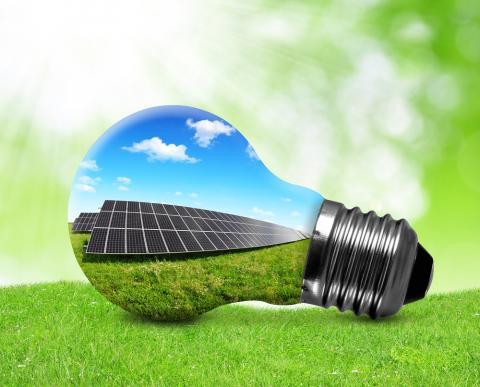
More and more people are switching over to various forms of alternative energy. There are several reasons people decide to choose a more environmentally safe and sound source of energy. A majority of people are switching to alternative energy to minimize their carbon footprint but some simply strive to be self-sufficient.
This is the final part of the three-part solar panel series. (Check out part 1 and part 2 for more great info on solar panels!). Today I will teach you different ways you can connect your batteries if you have a battery bank. You will also learn how to find out how much electricity your household uses in a month or a year. Let’s get started!
Battery Bank Connection Options
When using multiple batteries, there are three different ways you can connect the wiring for the system: a parallel connection, a series connection, or a combination of the two. Before you begin making any connections, it’s important that you be sure the batteries are all the same kind with the same amount of charge.
- Parallel Connection: The parallel connection allows you to connect two of the same batteries, which provides double the capacity of one battery while maintaining the same nominal voltage. This means if you are using two or more 12-volt batteries in a parallel connection the battery bank will still only produce 12-volts of power but the holding capacity is doubled or tripled. Just imagine the extra batteries as adding another hour of time. You see, a 12-volt battery is going to provide 200Ah (Amps per hour) and when you double the capacity you now have 400Ah. 400A will run for about an hour, so the fewer amps used the more time you have to use something.
- Series Connection: Connecting the batteries in a series has a different effect. If you connect 2 of the same 12-volt batteries in a series you will double your voltage, but the amps per hour will remain the same. So you now are doubling the power but the amount of time you have to run them will remain the same.
- Combination: You can also choose to use both methods of connecting the batteries and opt for the combination. If you choose to use the combination method you can increase the amps per hour, the voltage, and the capacity.
How Many Solar Panels Will I Need?
Before you can figure out how many solar panels you are going to need, there are a couple of things to look at: how much electricity your household uses and your reasoning for switching to solar.
Why are you switching to solar? Do you want to minimize your carbon footprint? Receive a return from the electric company? Save a little money? Become self-sufficient?
If you just want to save a little money, you might only need to invest in a couple of panels, but for being self-sufficient you may want your roof covered in panels. For those of you looking for the cash-back opportunity, this requires a company coming and installing all of your equipment and tying you into the grid, so you may have solar energy but you won’t technically be off the grid. How many panels you need will be based on four things:
- The climate and the amount of peak sunlight that is available in your area.
- The area you will be placing the solar panels. If you choose to mount the panels on the roof you’ll have to find out how much of the roof’s surface area is available, and the same goes for ground space.
- Electricity usage in the household or the actual appliances you plan to connect to.
- The type of solar panels you purchase, whether they be the mono or poly panels. You can also buy solar panels with different wattage, voltage, and outputs.
How Do I Find Out My Energy Usage?
- Look at previous electric bills from the coldest and hottest months of the year. Somewhere on the bill, you should find your average usage broken down monthly or annually. If you want to find out your daily usage simply take the monthly usage and divide it by 30 or take the annual usage and divide it by 365.
- There are various monitors that measure the amount of electricity used by specific appliances. You can even find meters for the whole house if you want.
- Read the electric meter outside of your home. It records your usage.
If you’re not ready to take the full plunge, no worries! There are plenty of solar-powered devices such as refrigerators, hot water tanks, and much more. You can even start small and look into some solar charges for devices like phones and tablets. It all starts somewhere, no matter how small!








